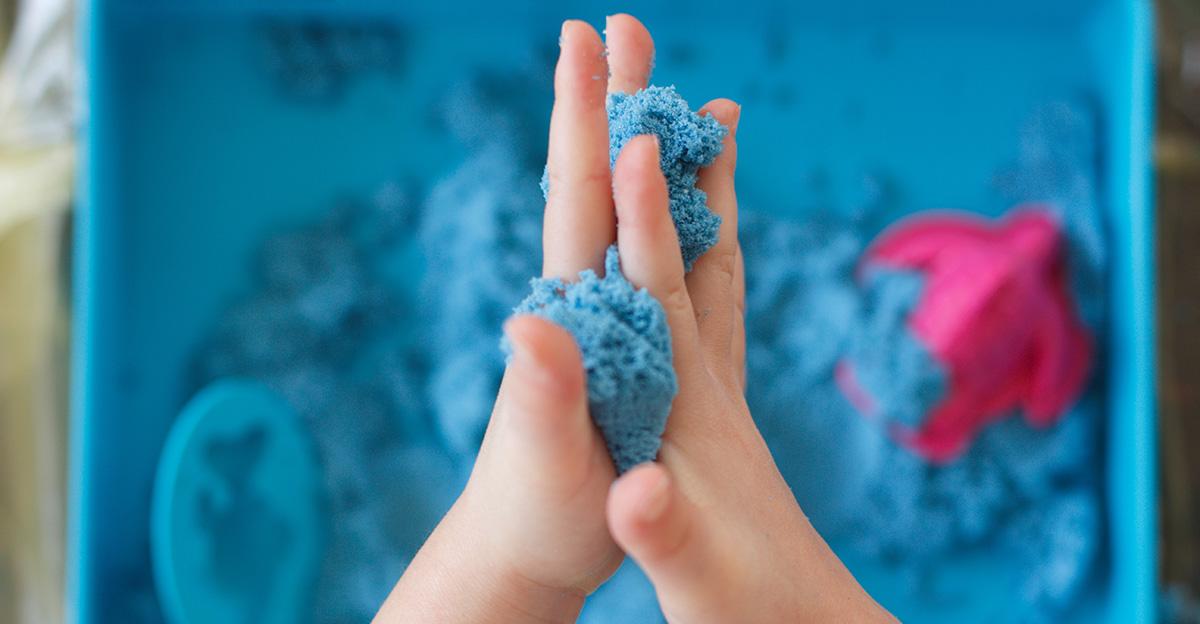Do you have a child that likes to jump, hop, or crash into things and other students? One that squeezes the glue bottle with too much intensity or rips the paper when writing and erasing? Perhaps they ask to be pushed higher on the playground swing or seem to want to spin in circles without ever seeming to get dizzy.
Or you have a student who cringes, covers their ears, or has a meltdown when the fire drill alarm goes off. Maybe they do not like their food to touch the plate and are extremely meticulous eaters. Or they are sensitive to touch, so they will go to extremes to avoid activities like fingerpainting or spending time at the sand and water table.
If this sounds familiar, you may have a child with sensory processing challenges. Research indicates roughly 5% to 16.5% of the general population have symptoms associated with sensory processing challenges. These estimates are higher for clinical populations such as autism spectrum disorder (ASD) and attention deficit hyperactivity disorder (ADHD).
Sensory Craving and Sensory Over Responders (SOR) are subtypes of a pattern called Sensory Modulation Disorder (Star Institute). There are other subtypes and characteristics of children with Sensory Processing Disorders (SPD). However, as an inclusive practice that promotes universal design, let’s just focus on a few tips that may support both sensory seekers (cravers) and sensory avoiders (over-responders), while remembering that children may sometimes show a combination of these responses.
1. Avoid visual overstimulation
Although visuals and peripherals are usually positive, too much clutter may be detrimental. A cluttered environment conflicts with the brain’s natural tendency (via the visual cortex and frontal lobe) to perceive our surroundings as organized and whole. How the brain perceives objects in relation to one another subconsciously guides our behavior and reaction to our environment. For students with sensory processing challenges, this may be added stress to their ability to see and interpret their surroundings. Tone down primary colors such as red and yellow in wall coverings and classroom furniture, opting instead for earth tones and green/blue hues. Minimize hanging artwork or other wall visuals and use storage tubs or cabinets to reduce the number of supplies visible in plain sight. Less is more!
2. Avoid auditory overstimulation
Many students with sensory processing challenges are overly sensitive to sound. Acoustic panels can help divide a classroom for better spatial boundary definition (which may help with visual overstimulation) while reducing classroom noise with sound-absorbent walls. Of course, keep portable options handy for other scenarios. Noise-canceling headphones may help with problematic transitions and activities like fire drills or pep rallies.
3. Provide opportunities for heavy work and deep touch pressure input
Pulling a heavy wagon, carrying a box of books, sweeping the floor with a weight attached to the broom, and using a weighted lap pad at intervals are all examples of this type of proprioceptive input which may help with calming and organizing for both sensory avoiders and sensory seekers. Sensory seekers may need additional heavy work activities such as a Wiggle Space, while sensory avoiders may want to regroup in a Chill Corner.
4. Provide options for fine motor activities
Young sensory cravers will love center time activities with various textures like finger paints and sand and water play options. However, sensory avoiders may find these activities stressful and threatening. Having options for both is key. Try using Kwik Stix to replace finger or tempera paints for touch-sensitive children. Non-toxic and touch-friendly options like Sandtastik are a good choice for sand tables. Additional fine motor tools give more handling options to include sensory avoiders in play. Exercise putty and tools can be used as a replacement for modeling clay.
5. Stay on task and on time!
Students with sensory processing challenges may do better with additional structure. Providing a visual support schedule like SchKIDules or visual timers may help support self-regulation skills and prevent off-task behaviors.
Recognizing that all children have sensory preferences is the first step to creating a supportive learning environment. Be sure to visit our website for additional ideas on supporting students with sensory challenges.

Cecilia Cruse, MS, OTR/L has a BS degree in Occupational Therapy from the University of Florida, and her Master’s degree in Education from Georgia State University. She is SIPT certified and has over 25 years of experience in pediatrics with school-based services, acute care, and outpatient pediatric settings.






Leave a Reply